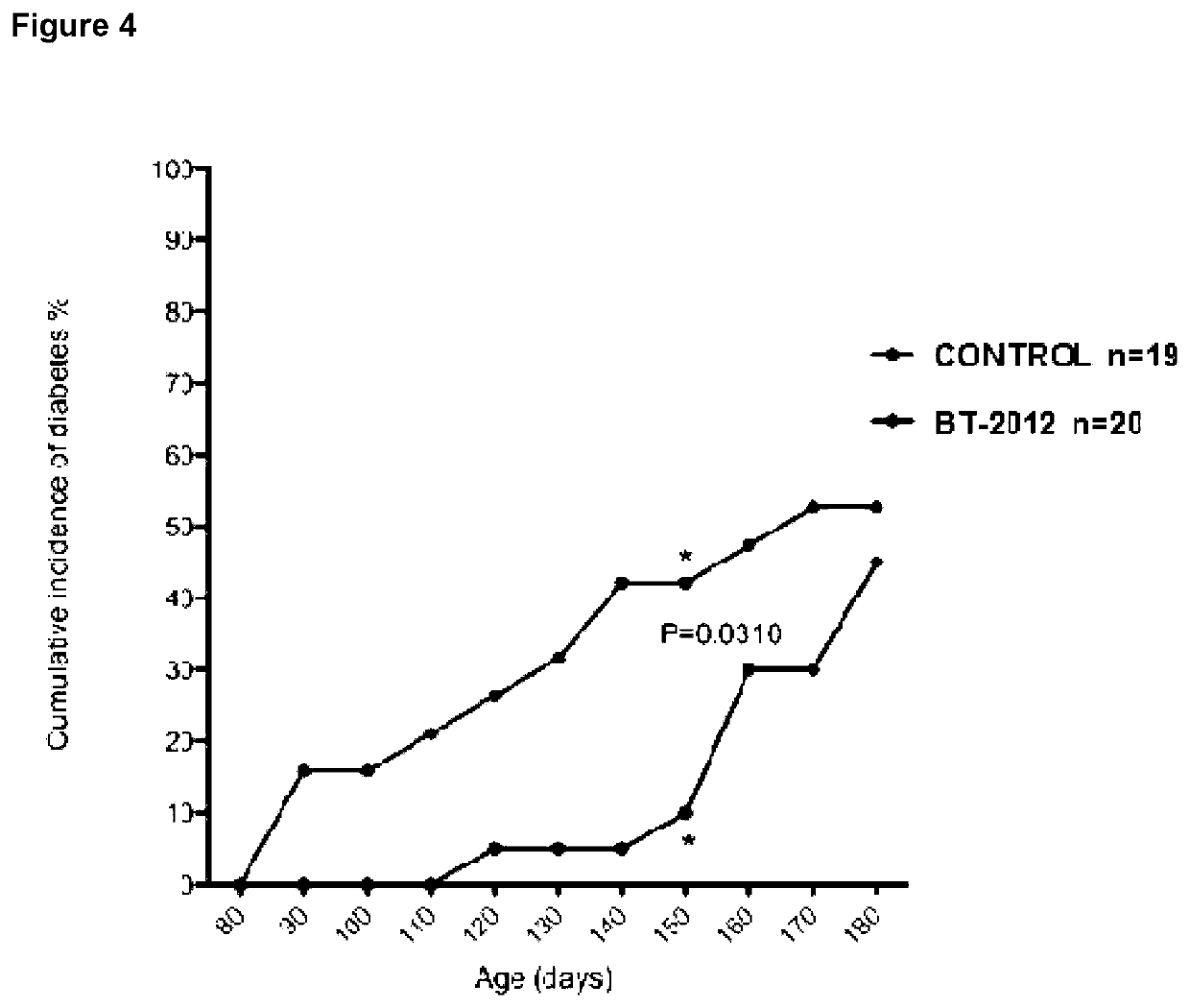Heparanase Inhibitors and Use Thereof
a quinazoline compound, functional technology, applied in the direction of drug compositions, metabolic disorders, cardiovascular disorders, etc., can solve the problems of hyperglycaemia, rare, if ever, precise and sustained control of blood sugar levels, kidney disease, blindness, etc., to avoid or minimise adverse side effects
- Summary
- Abstract
- Description
- Claims
- Application Information
AI Technical Summary
Benefits of technology
Problems solved by technology
Method used
Image
Examples
examples
Abbreviations
[0180]BOC refers to a t-butoxycarbonyl group.
DCM refers to dichloromethane.
THF refers to tetrahydrofuran.
DMF refers to N,N-dimethyformamide.
DMSO refers to dimethyl sulfoxide.
EtOAc refers to ethyl acetate.
rt refers to room temperature.
General Procedures
[0181]Unless otherwise specified, proton (1H) and carbon (13C) NMR spectra were recorded at room temperature in base-filtered CDCl3 with a Bruker spectrometer operating at 400 MHz for proton and 100 MHz for carbon nuclei. For 1H NMR spectra, signals arising from the residual protio forms of the solvent were used as the internal standards. 1H NMR spectroscopic data are recorded as follows: chemical shift (δ) [multiplicity, coupling constant(s) J (Hz), relative integral] where multiplicity is defined as: s=singlet; d=doublet; t=triplet; q=quartet; m=multiplet; br=broad or combinations of thereof. The signal due to residual CHCl3 appearing at δH=7.26 ppm and the central resonance of the CDCl3 “triplet” appearing at δC=77.0 or...
synthesis examples
I. SYNTHESIS EXAMPLES
General Experimental Procedures
[0184]The following General Experimental Procedures are illustrative synthetic methods that may be used in equivalent reactions involving alternative starting materials or reagents in order to produce the corresponding alternative reaction products.
General Procedure A
Preparation of 2,4-dichloroquinazolines
[0185]
[0186]Using a procedure analogous to that reported by Zhong et al. (Heterocycles 2012, 85, 1417-1426), a magnetically stirred solution of triphenylphosphine oxide (170 mg, 0.6 mmol) in chlorobenzene (5 mL) at 0° C. was treated with triethylamine (400 μL). The solution was then treated dropwise with a solution of triphosgene (630 mg, 2.1 mmol) in chlorobenzene (6 mL) and stirring was continued at rt for 0.5 h. The mixture was then treated with 2-aminobenzonitrile (354 mg, 3 mmol) in one portion and heated at 120° C. for 5 hr. The mixture was cooled and stirred for 18 h at rt then water was added and the mixture extracted with...
synthesis example 5
BT2009
[0222]
[0223]Using a procedure analogous to that reported by Seijas J. A et al. (Tetrahedron Lett. 2000, 41, 2215-2217), a 10 mL snap-cap microwave vessel was charged with a mixture of 2-amino-4,5-dimethoxybenzonitrile (151 mg, 0.85 mmol), benzonitrile (87 mg, 0.84 mmol), and potassium t-butoxide (10 mg, 0.089 mmol), flushed with nitrogen and subjected to microwave irradiation for 1 minute (180° C. / 1 min., ramp time 1 min., maximum power 200 W). The mixture was cooled to rt and the residue subjected to flash column chromatography [silica, 1:1 v / v Et2O / Pet spirit elution] to give, after concentration of the appropriate fractions the compound BT2009 (57 mg, 24%) as a white solid. 1H NMR (CDCl3, 400 MHz) δ 8.47-8.43 (m, 2H), 7.51-7.43 (m, 2H), 7.36-7.24 (m, 1H), 7.33 (s, 1H), 6.93 (s, 1H), 5.41 (s, 2H), 4.05 (s, 3H), 4.02 (s, 3H); (+)-LRESIMS m / z (rel. int.) 282 (100) [M+H]+; (+)-HRESIMS calcd. for C16H16N3O2 [M+H]+ 282.1237, found 282.1244; vmax 3485, 3379, 1626, 1578, 1551, 1467...
PUM
| Property | Measurement | Unit |
|---|---|---|
| pH | aaaaa | aaaaa |
| temperature | aaaaa | aaaaa |
| temperature | aaaaa | aaaaa |
Abstract
Description
Claims
Application Information
 Login to View More
Login to View More - R&D
- Intellectual Property
- Life Sciences
- Materials
- Tech Scout
- Unparalleled Data Quality
- Higher Quality Content
- 60% Fewer Hallucinations
Browse by: Latest US Patents, China's latest patents, Technical Efficacy Thesaurus, Application Domain, Technology Topic, Popular Technical Reports.
© 2025 PatSnap. All rights reserved.Legal|Privacy policy|Modern Slavery Act Transparency Statement|Sitemap|About US| Contact US: help@patsnap.com



